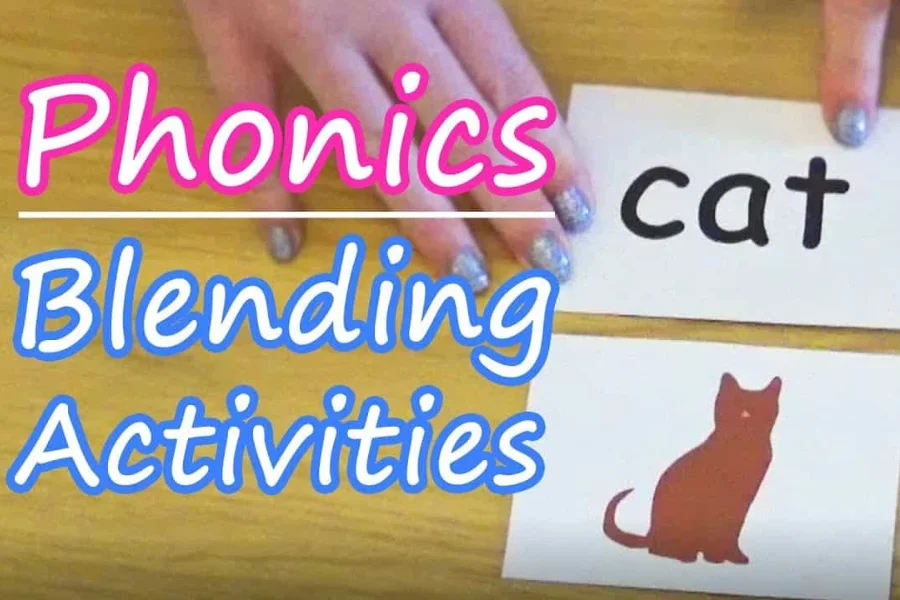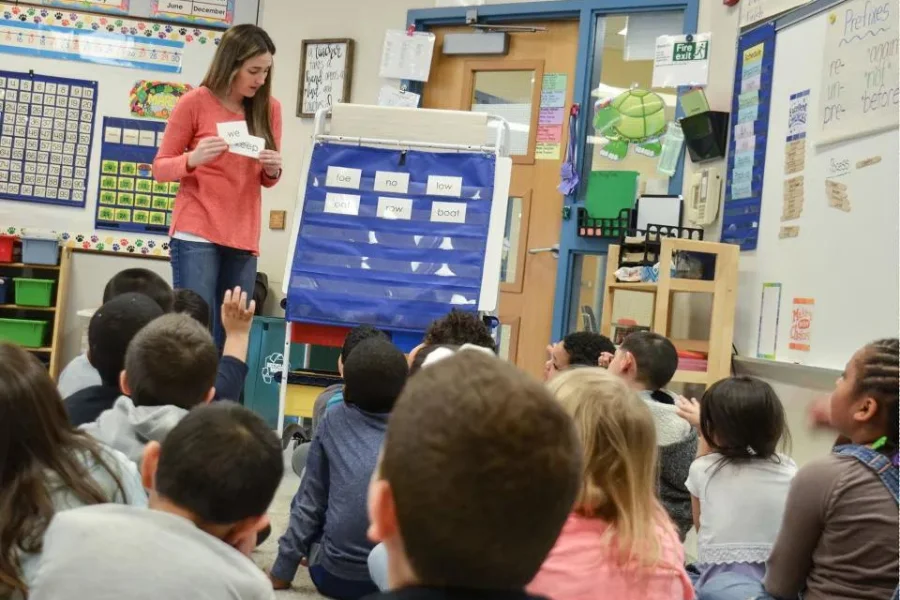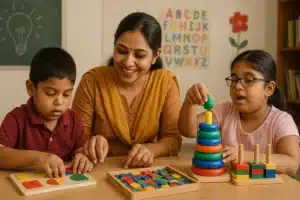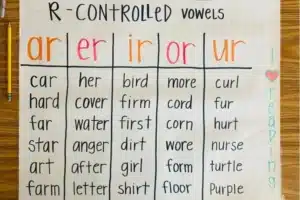
Source: mammamia
Phonics and Blends are important detail in teaching children how to study correctly. Phonics emphases on the sounds that letters make, even as blends include mixing of two or three consonants that combine to create a brand-new sound. Each letter in a blend holds its individual sound, but while blended, they produce a completely unique sound this is crucial for reading fluency.
For example, in the word “play,” the “p” and “l” join to form the accurate pronunciation. Though these blends found at the beginning, middle, or end of words, phonics and blends aids young learners to decode words more correctly,
What is Blending in Phonics?
Blending in phonics is the method of mixing individual sounds to make a word. It is a vital ability that children need to broaden to read words exactly and fluently. When a youngster blends, they take the separate sounds of every letter in a phrase and integrate them to pronounce the phrase.
For example, in the word “cat,” a child first categorize the sounds /k/, /a/, and /t/ distinctly. Then, they would blend these sounds together to say the word “cat.” This skill to blend sounds flawlessly is essential not just for reading but also for spelling, as it aids children understand how words are created from individual sounds.
For more details of Phonics Course Call / Whatsapp +919869866277/+919869546913
To Download Brochure of Phonics Course, Click Here!

Source: phonicspower
How to Teach Blends in Phonics?
Teaching Blends in Phonics requires a structured approach that introduces children to the concept gradually and reinforces it through consistent practice.
Here is a step-by-step guide to effectively teach blends:
Begin with Simple and Common Blends
Start with blends that are frequently used and easier for children to grasp, such as “bl,” “st,” and “tr.” These initial blends should be introduced with familiar words, like “blue,” “stop,” and “tree,” to help children connect the sounds with words they already know.
Incorporate Visual and Auditory Tools
Use a combination of visual aids, which incorporates flashcards with blend phrases, and auditory tools, like phonics songs, to emphasise the sound of every blend. For example, showing a picture of a “flag” at the same time as emphasizing the “fl” sound can assist children to keep in mind the blend through association.
Practice Blending Sounds through Interactive Activities
Involve children in activities which they are able to physically use letters or letter cards to form blends. For example, give them a set of letters and ask them to create words like “clap” or “frog” with the aid of mixing consonants together. This hands-on practice helps solidify their understanding.
Integrate Blends into Daily Reading Exercises
During reading sessions, highlight words that contain blends and ask the child to read them aloud. This not only reinforces the blends but also helps them see how these blends function in the context of real words.
Provide Ample Practice Opportunities
Consistent practice is key to mastering blends. Make worksheets, games, and other activities that involve children to identify, read, and write blends regularly. For instance, a worksheet might ask the child to fill inside the missing blend in a word or to match a blend with a picture.
Use Multi-sensory Techniques
Including multi-sensory methods, inclusive of tracing letters while pronouncing the sounds, can assist to strengthen the learning process. For example, a child might trace the letters “b” and “l” in sand while saying “bl” as they do so, which benefits them keep in mind the blend each visually and kinaesthetically.

Source: desertcart
How Many Types of Blends Are there in Phonics?
Phonics blends are generally divided into two main types: consonant blends and vowel blends. Understanding those types helps kids recognize how dissimilar sounds associate to form words.
Consonant Blends
Sets of 2 or 3 consonants where each letter contributes its individual sound, however the sounds are blended without dropping their individual identities are consonant blends. These blends are can be seemed at the start (e.g., “bl” in “black”), mid (e.g., “sp” in “whisper”), or at the end (e.g., “nd” in “hand”) of words.
Some common consonant blends include:
- Initial Blends: Such as “bl,” “cl,” “fl,” “gr,” “st,” and “tr.”
- Final Blends: Such as “nd,” “st,” “lt,” and “mp.”
Vowel Blends (Diphthongs)
When two vowels are combined to make a unique sound that is different from either vowel’s individual sound are known as vowel blends or diphthongs.
Examples include:
- “oi” as in “boil”
- “ou” as in “out”
- “ai” as in “rain”
These vowel blends are important for understanding more composite words and are often taught after the child has mastered consonant blends.
What is an Example of a Blend in Phonics?
Keep in mind the example of the word “flag” for better understanding of how blends work in phonics. In this word “flag”, the letters “f” and “l” form a consonant blend. When children try to read this word, they are supposed to combine the sounds of “f” and “l.” The end result is a smooth pronunciation of the phrase “flag.”
Another example is the word “stop,” where the “s” and “t” sounds are combined at the start of the word. The child learns to combine these sounds easily to pronounce the word correctly. These examples highlight how blends are used in everyday words, making them an essential part of reading instruction.
Phonics Training for Teachers
Educators who want to improve their teaching techniques and aid pupils to develop strong reading skills for them phonics training is important. The knowledge of phonics and blends is a vital part of early learning education, and tutors prepared with this knowledge are able to improve students’ reading efficiency.
Phonics Training for Teachers emphases on teaching the sounds that letters make and how these sounds mix to form words. This training prepares teachers with techniques to effectively explain students how to interpret words via phonics. With a strong foundation in phonics, educators can help students identify and blend sounds, improving their reading and spelling skills.
Key components of Phonics Course include:
Understanding phonics and blends
Teachers study how dissimilar consonants and vowels combine to form new sounds.
Interactive teaching methods
Teachers are skilled to use multi-sensory approaches to involve students in phonics learning.
Practical classroom applications
Teachers learn how to fit in phonics lessons into daily classroom events.
Vidhyanidhi Education Society (Govt. Regd.) conducts an all-inclusive Phonics Course, guiding teachers with the skills required to teach phonics efficiently. This course is perfect for those who are looking to expand their understanding of phonics and blends and execute these ideas in their teaching training. By completing this phonics training, teachers can ensure their pupils develop strong literacy skills, building a strong foundation for future learning.
Boost your Phonics teaching skills with Vidhyanidhi Education Society’s Phonics Course!
For more details of Phonics Course Call / Whatsapp +919869866277/+919869546913
To Download Brochure of Phonics Course, Click Here!
FAQs
How to Learn Phonics as a Teacher?
Become a certified Phonics teacher with Vidhyanidhi Education Society's Phonics TT course and get gain detailed knowledge on how to teach phonics efficiently.
Is There Demand For Phonics Teachers In India?
Yes, there is a growing demand for Phonics instructors in India because of the growing knowledge on early literacy, creating opportunities in faculties and personal tutoring.
How Do I Start Phonics Classes At Home?
Get complete guidance from Vidhyanidhi Education Society to start your own Phonics classes at home with confidence.



